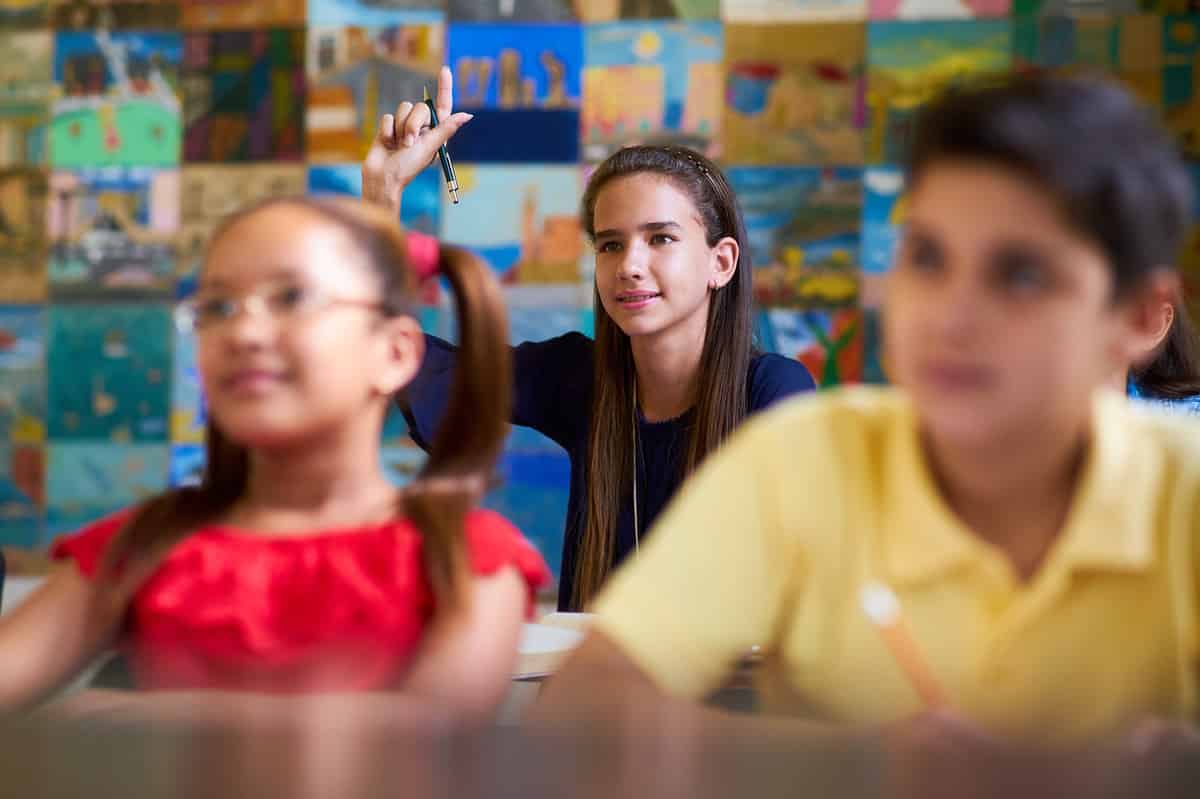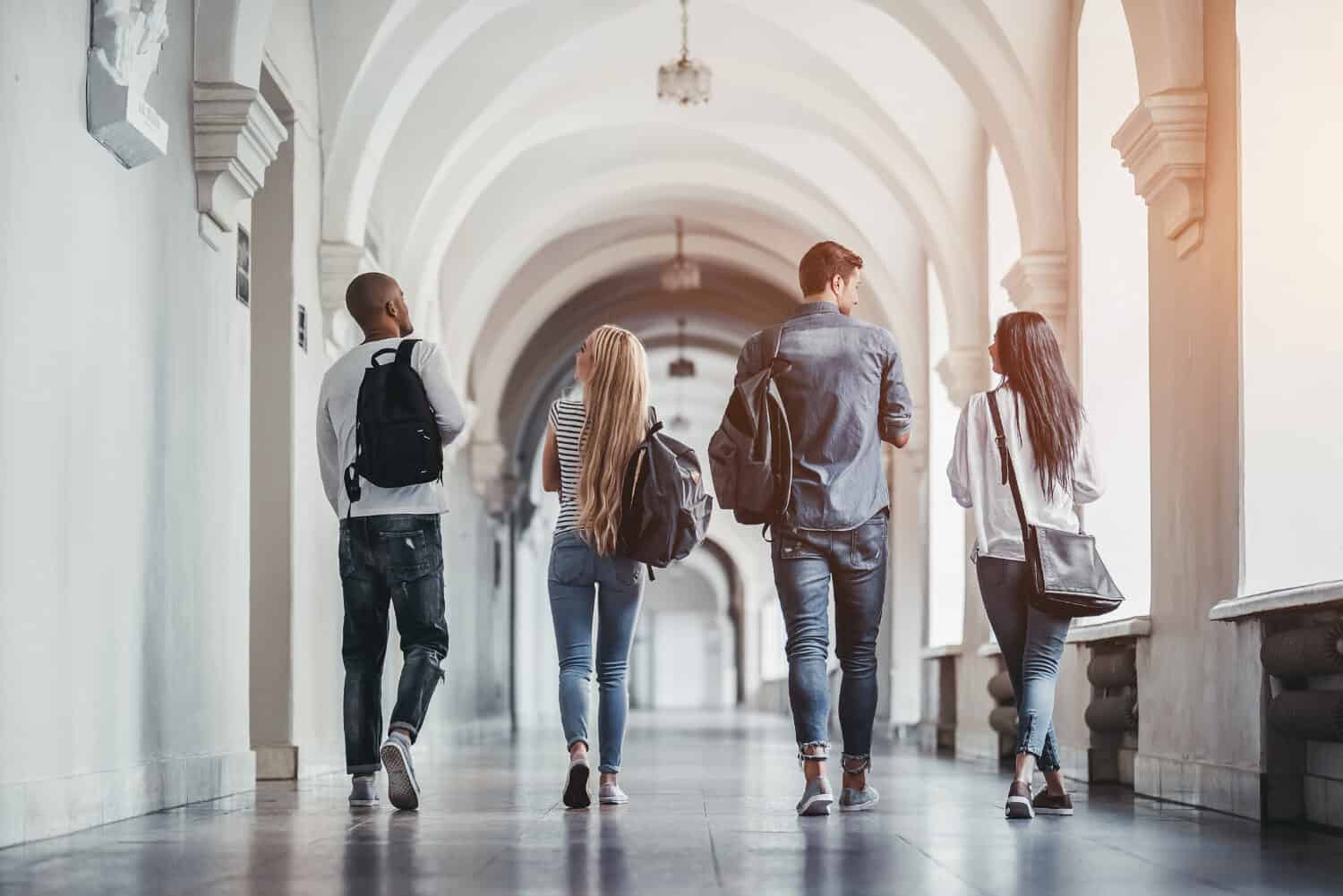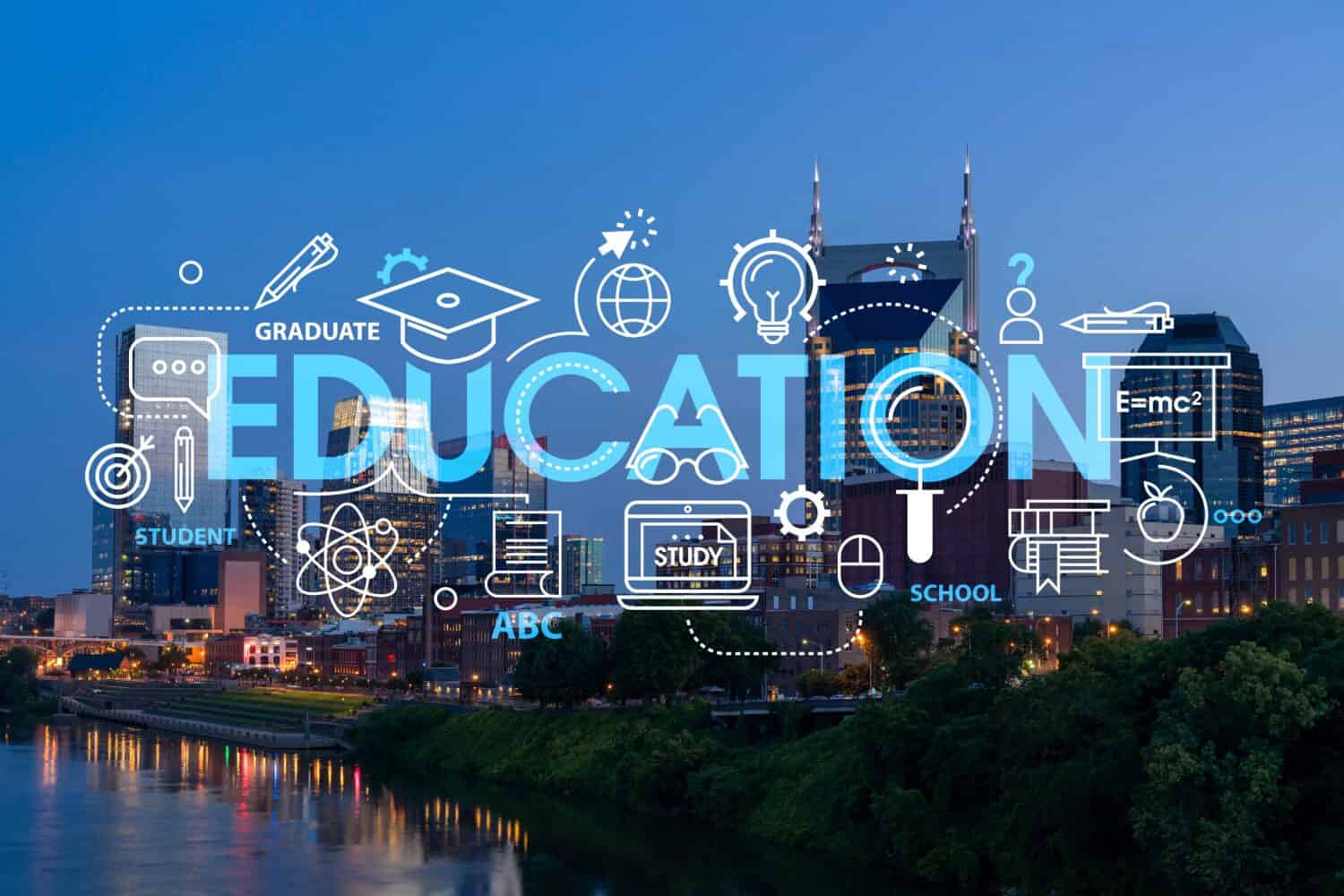Tennessee is a great state that’s known for many amazing things, from its rich musical heritage to being the home to the Great Smoky Mountains National Park. It’s also a great state if you’re looking to get a good education. However, not all schools are created equal. Today, we’ll be talking about the worst schools in Tennessee.
In this list of the worst schools in the state, we’ll be looking at various metrics and how many of these institutions fall short. Among those metrics will be test scores, student progress, equity, diversity, graduation rates, teacher qualifications, and more. We hope that this list will give you an idea of what to look for when choosing a school for your children and what to look for now and in the future.
Worst Schools In Tennessee: Elementary
As parents, it’s crucial that you choose a good elementary school for your kids. This is one of the first steps in your child’s education and they need solid building blocks to excel as they go through the grades. While there are good elementary schools, these are three of the worst.
Tennessee Virtual Academy
Located within the Union County School District, Tennessee Virtual Academy is a large school with 1,348 students, but it has poor scores in a few metrics, per GreatSchools.org. One major area of concern is student progress since the kids attending this school are falling behind other similar students in the state. Test scores here are quite low as there’s only a 23% proficiency in science, an 18% proficiency in English, a 9% proficiency in math, and a 21% proficiency in social studies. On top of that, there’s less than a 1% participation rate in advanced courses like Algebra 1, and the students who do attend only have a 25% proficiency rate.
There are also some ups and downs when it comes to equity and diversity. While there is a mix of different cultures, low-income students fall far behind the state average compared to other students when it comes to test scores. Students with disabilities also get suspended twice as much as students without disabilities.
There’s also a mixed bag when it comes to teaching. On the good side, all teachers are fully certified, and all teachers have more than three years of experience. However, there’s a fairly high student-to-teacher ratio of 20:1 and a student-to-counselor ratio of 619:1, which means the students could get more individualized attention.
Vollentine Elementary School
Next is Vollentine Elementary School, which receives low marks for equity and test scores. This is a relatively small public school at about 358 students. However, even with that number of students, they tend to be behind kids at other schools when it comes to academic progress. The test scores are far behind other schools, with a 5% proficiency in math, a 5% proficiency in English, and a 13% proficiency in science.
The school also has room for improvement when it comes to diversity. Currently, 93% of students are African American. It’s important to have diversity in your school because the kids can learn to have appreciation for the many different people they meet. There’s also an issue here with low-income students, because they test far below other students in the state that are not considered low-income.
It’s a mixed back when it comes to the teachers at Vollentine Elementary School. There’s a student-to-teacher ratio of 11:1, which means that the students are getting fairly good personalized attention. However, there’s a counselor-to-student ratio of 344:1, so that could be improved. Meanwhile, 90% of the teachers here are certified, and 80% of them have more than three years of experience, so the student’s success will often depend on the instructor.
Levi Elementary School
Located in the Shelby County Schools district, Levi Elementary School is a public school with about 465 students in grades PK-5. Overall, the students here are making less academic progress than others in Tennessee, and the test scores are dismal. The school shows a 15% English proficiency, a 6% science proficiency, and an 8% math proficiency.
Like at the previous school, there’s a fairly low diversity score, considering that 98% of the students are African American. Beyond that, 2% are two races or more. Again, more diversity means more well-rounded students. However, there is close to a 50-50 mix of male and female students.
The student-to-teacher ratio at Levi Elementary School is higher than at the other school at about 16:1. While 100% of the teachers are certified, only 50% have three years of experience or more. There’s also a counselor-to-student ratio of 475:1, so students often need to turn elsewhere when they need support.
Worst Schools In Tennessee: Middle School

©Diego Cervo/Shutterstock.com
Once your children reach middle school, they should have a firm understanding of the building blocks of their education, and they should have the support to continue to evolve. The Tennessee middle schools below have some room for improvement.
E. A. Cox Middle School
Located within the Maury County School District, E. A. Cox is a mid-sized middle school with about 755 students. The school ranks fairly low when it comes to testing and academic progress. The test scores here are fairly dire. Currently, the school has a 13% science proficiency, a 12% English proficiency, a 7% math proficiency, and a 10% social studies proficiency. There’s also a mixed bag when it comes to students in advanced classes, like Algebra 1. While there’s a 43% participation rate, only 8% of students pass the class.
As far as diversity, this school does better since 43% of students are white, 37% are African American, and 18% are Hispanic. However, low-income students do often get lower test scores than those not considered low-income. Also, there’s a 22% suspension rate for students with disabilities compared to 15% for students that aren’t disabled.
Things are going fairly well from a teaching standpoint. There’s a decent student-to-teacher ratio of 13:1. Also, 100% of teachers are certified, and 95% have three or more years of experience. However, there is a 381:1 ratio of students per counselor to consider.
Lafollette Middle School
This is a public school in Campbell County, and it has about 472 students at the time of this writing. Lafollette Middle School is considered to be one of the worst schools in Tennessee due to low test scores and student progress. Many students at this middle school are making far less academic progress from where they were last year when compared to other students in the school.
Currently, the school has a 15% social studies proficiency, a 10% English proficiency, a 7% math proficiency, and a 9% science proficiency. There’s also a shocking lack of students participating in advanced courses like Algebra 1. It’s under 1%.
From a diversity standpoint, it’s rather low. Currently, about 97% of the students are white. Also, test scores for low-income students are well below the state average for all other students. There’s a mix of 45% to 55% for females versus males.
As far as teaching is concerned, 100% of teachers are certified, and 100% of teachers have at least three years of experience. The student-to-teacher ratio is 16:1, which could be better. Most shocking is that there’s a counselor-to-student ratio of 531:1.
Cordova Middle School
This is a medium-sized public middle school that belongs to the Shelby County Schools district, and it’s home to about 800 students. This middle school scores low for test scores, student progress, and equity. Although it’s better than some of the lower schools on this list, the students here are still making less academic progress than other youth in the state. As far as test scores, there’s a 17% proficiency rate for English, 15% proficiency for social studies, 13% proficiency for science, 8% proficiency for math, and a 28% proficiency for algebra.
Equity and diversity could be better as well. Currently, 67% of students are African American, 13% are white, and 11% are Hispanic. It’s a decent mix but it can be improved. The test scores also show that low-income students are falling far behind other non-low-income students. Finally, teaching is a mixed bag. 100% of the teachers are certified, but only 77% have three years of experience. The student-to-teacher ratio is near the state average at 15:1, but the counselor-to-student ratio is 241:1.
Worst Schools In Tennessee: High School
It’s crucial that our students are in the best possible high school since, for many, this is the last level of education they may have in their life. Some students will decide to move on to college, and so a high school must prepare them for that experience. So, college readiness is another metric to which these schools are judged. Many high schools in the state pass the bar as far as academic progress, but the schools below need some help.
Melrose High School
The first high school on this list gets low marks for student progress and equity. Students here are making less progress than students at other schools, and they fall way behind in the college readiness metrics. Currently, there’s only a 64% graduation rate. Out of them, only 44% intend to attend college. 50% of those students don’t return for a second year of college.
Also, while 94% of students take the ACT test, the average score is 14, which is not high enough to get into many colleges.
Test scores for students currently attending the school are also bad. Currently, there’s a 5% proficiency rate in biology classes and a 6% proficiency in English. There’s also a lack of students taking advanced courses like math and science. Less than 1% of students are taking those classes.
As far as equity, there could be more of a mix of students, as 96% of students are African American, and all other races are close to or less than 1%. There are also some ups and downs to consider. There’s an average student-to-teacher ratio of 15:1, but only 92% of teachers are certified, and only 72% of teachers have more than three years of experience.
Hamilton High School
This public school in the Shelby County Schools district has 655 students, and many say that they’re not getting the best education based on student progress and college readiness. Students are making far less academic progress when compared to other students in the state.
The issue starts with test scores since there’s less than a 10% proficiency in subjects like English 2. There’s also very few students attending advanced courses like AP math and science. The poor test scores bleed into the student’s ability to properly prepare for college. While 95% of students take the ACT, the average score is 13, which is much lower than many colleges will accept. Even in the best-case scenario, there’s only a 62% four-year graduation rate.
As far as teaching is concerned, the numbers could be better. The student-to-teacher ratio is decent at 12:1, and 98% of those teachers are certified. However, only 71% of the teachers have more than three years of experience. There’s also a 318:1 counselor-to-student ratio to consider.
Wooddale High School
Our final high school is Wooddale High School, which is a public school in the Shelby County School District. There are some issues here when it comes to college readiness and student progress. The school is below others in the state when it comes to many factors that prepare kids for college, including having a 77% high school graduation rate. Also, out of the 99% of students who take the ACT test, the average score is 14, which isn’t high enough for many colleges. The other problem is that only 36% of students are planning to attend college. Of those who did, only 70% returned for a second year.
Students are also not excelling in their current classes. There’s only a 13% proficiency in the school for English classes and 6% in biology. The students also aren’t performing in AP classes like science and math, so they’re not getting the resources to succeed in college.
As far as teaching is concerned, 94% of the full-time teachers are fully certified, but only 82% of teachers have at least three years of experience. The student-to-teacher ratio is 15:1, while the counselor-to-student ratio is 386:1.
Worst Schools in Tennessee: Colleges

©4 PM production/Shutterstock.com
Parents and students pay a lot for college, so it’s essential that they get a good experience. After those years of learning and effort, it’s important that they graduate. Unfortunately, many schools in Tennessee have a low graduation rate, and the colleges below have some of the least impressive numbers.
- Le Moyne-Owen College – (Graduate Rate of 18%) – A smaller private four-year college in Memphis, TN.
- Lane College – (Graduation Rate of 24%) – A private four-year college in Jackson, TN.
- Tennessee State University – (Graduation Rate of 30%) – This is a public four-year university in Nashville. The school also has a retention rate of 53%, which means that many students opt to leave to attend another school at some point.
- The University of Tennessee Southern – (Graduation Rate of 34%) – It’s a private four-year school in Pulaski, TN.
- Bethel University – (Graduation Rate of 38%) – This is a private university in McKenzie, TN.
- Tusculum University – (Graduation Rate of 41%) – Private four-year college in Greeneville, TN.
- Austin Peay State University – (Graduation Rate of 42%) – A public four-year college in Clarksville, TN.
- Fisk University – (Graduation Rate of 46%) – Private school in Nashville.
- King University – (Graduation Rate of 46%) – Private university in Bristol, TN.
- Southern Adventist University – (Graduation Rate of 48%) – Private school in Collegedale, TN.
Conclusion
This has been a sampling of the worst schools in Tennessee. Keep in mind that they're not the only schools in the state that need help. It’s important to always do your research when looking at learning institutions for yourself or your children so you can ensure the best chance for their success. Attend the schools on this list with caution.
The image featured at the top of this post is ©VideoFlow/Shutterstock.com.

